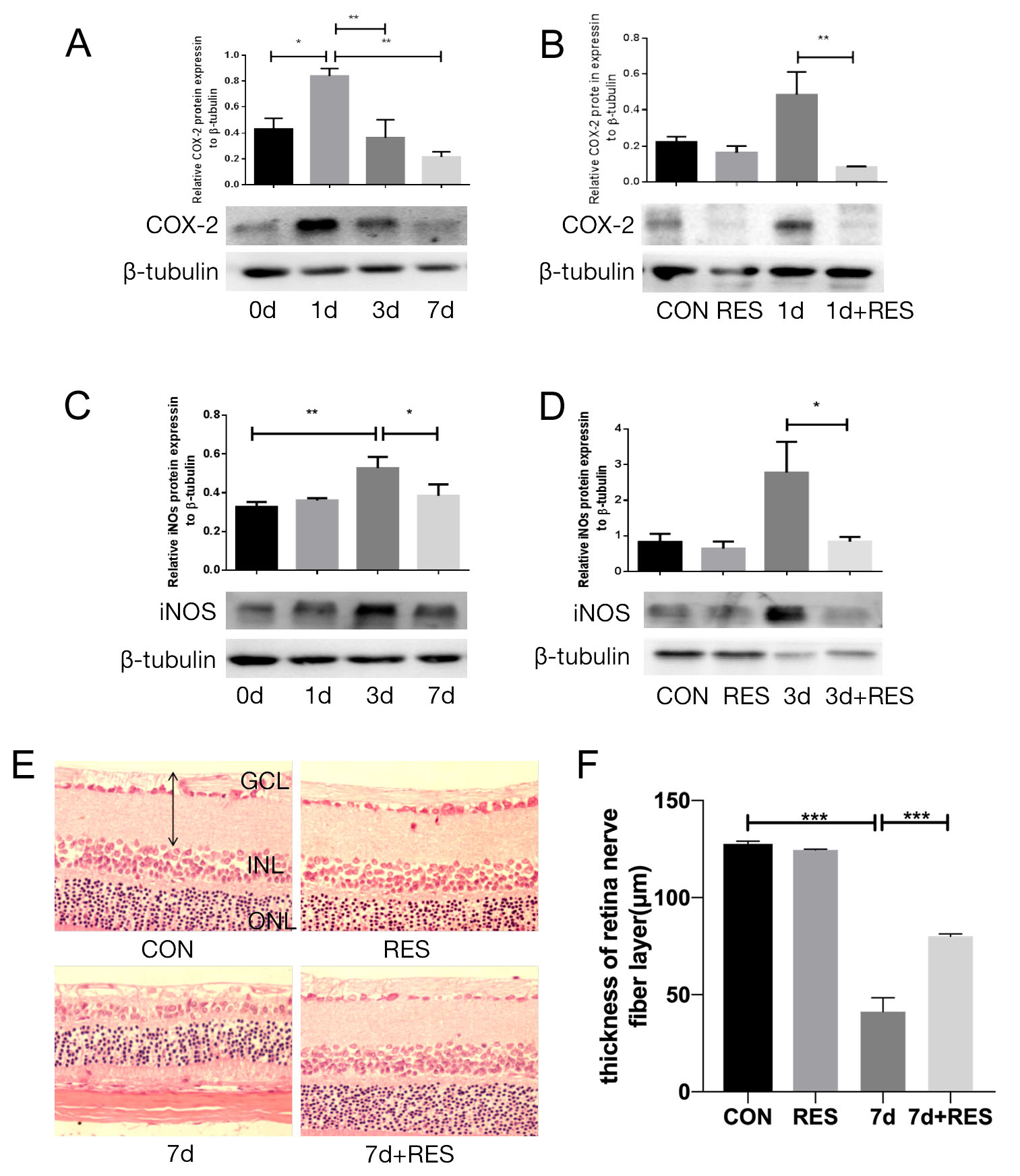Figure 4. RES delays RGC loss and attenuates gliosis-related inflammation from I/R injury. A-D: The effect of resveratrol (RES) on the production of pro-inflammatory mediator. Ischemia-reperfusion (I/R) injury markedly
upregulated the expression of COX-2 at day 1 (A) and iNOS at day 3 (C), but RES statistically significantlyinhibited the production of these two proinflammatory mediators (B, D). β-tubulin was used as a loading control in all samples. Data were shown as mean ±standard error of the mean (SEM; *p <
0.05, **p<0.01, n=6). E, F: RES treatment inhibited retinal tissue loss after I/R injury. E: Hematoxylin and eosin (H&E) staining of retinal cross-sections showed the degeneration of retinal ganglion cells (RGCs)
and the decreased thickness of retinal tissue at 7 days after I/R injury, and this effect was markedly inhibited with RES
treatment. Representative images from the control group, control group plus RES, 7-day I/R group, and 7-day I/R group plus
RES (40X). F: Effects of RES on retinal tissue after I/R injury. Retinal tissue thickness was assessed by H&E staining and Image J analysis.
Data are shown as mean ±SEM (**p < 0.01, ***p<0.001, n=4).

 Figure 4 of
Deng, Mol Vis 2020; 26:36-47.
Figure 4 of
Deng, Mol Vis 2020; 26:36-47.  Figure 4 of
Deng, Mol Vis 2020; 26:36-47.
Figure 4 of
Deng, Mol Vis 2020; 26:36-47. 